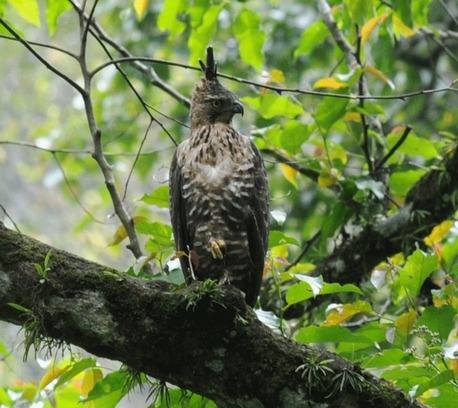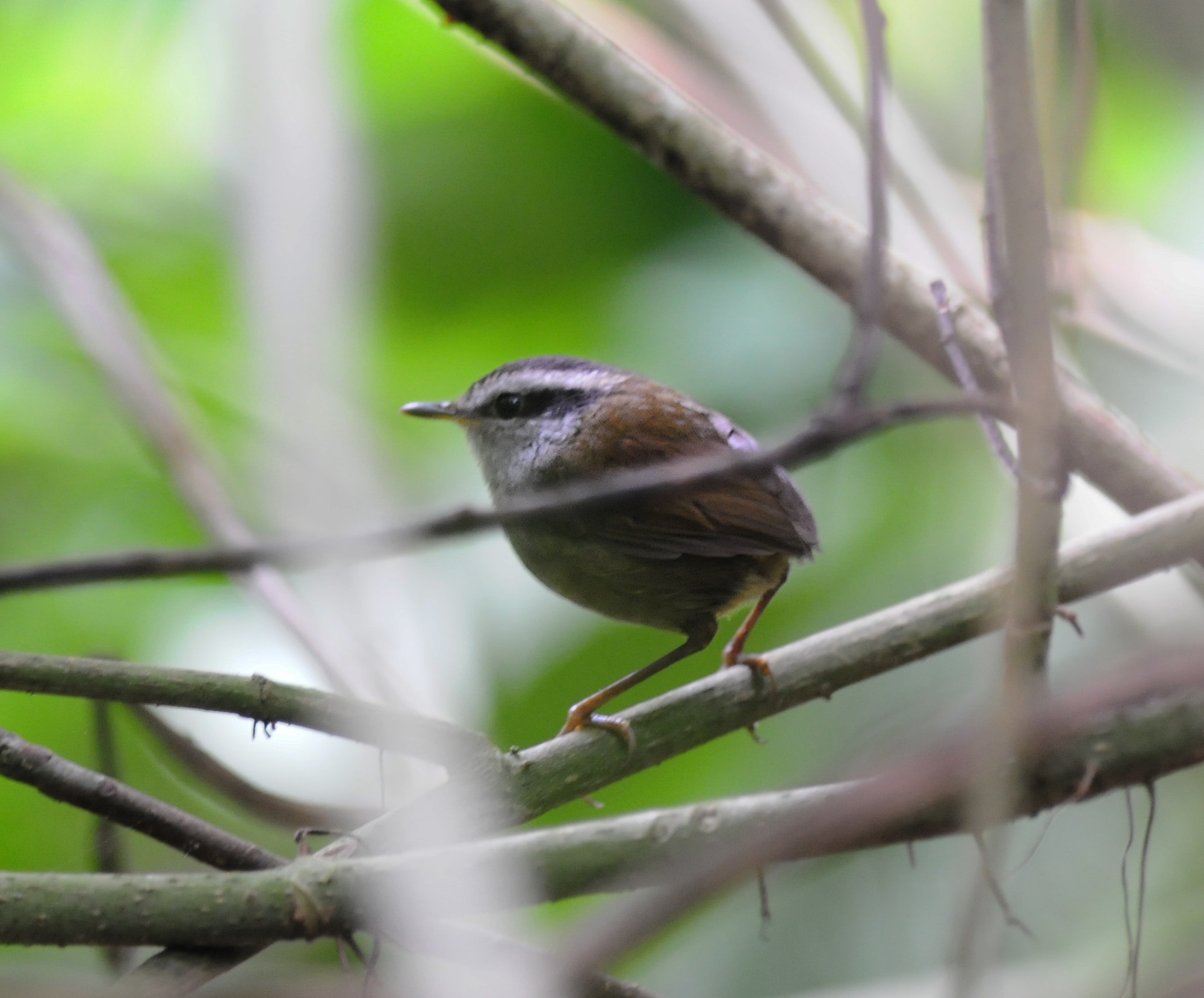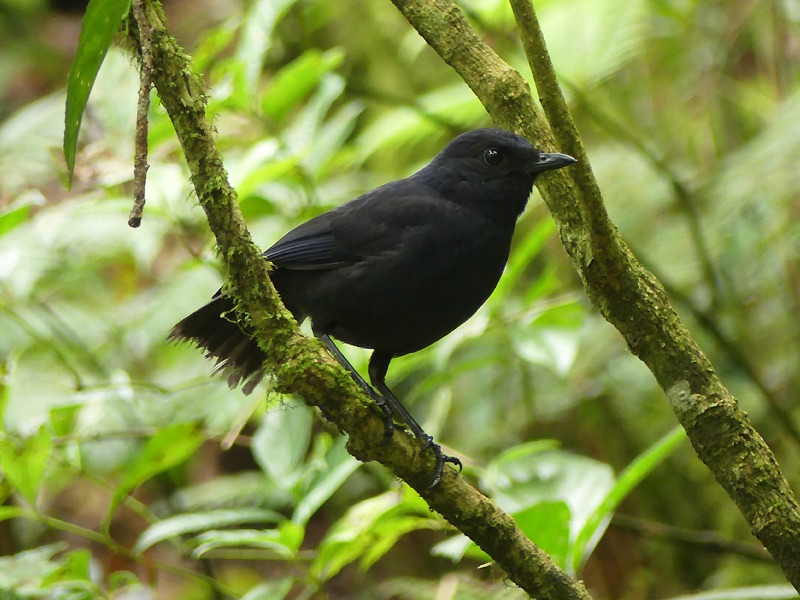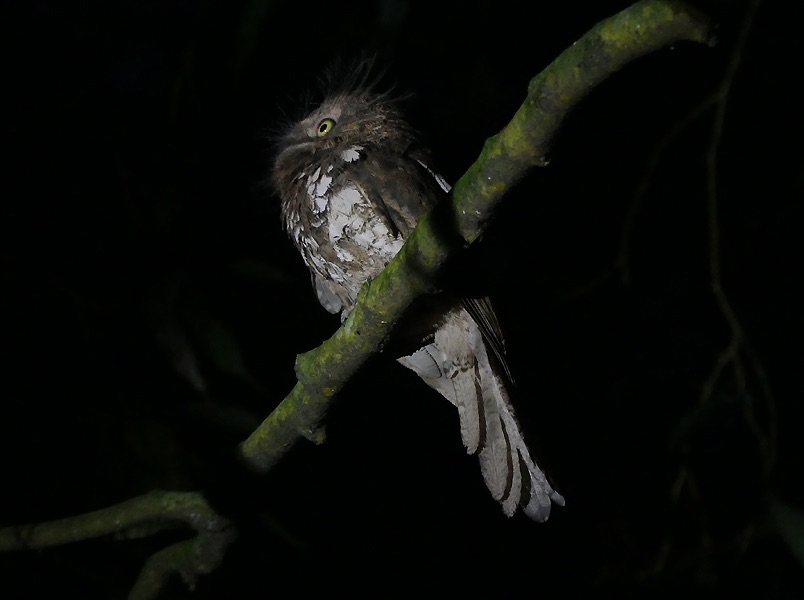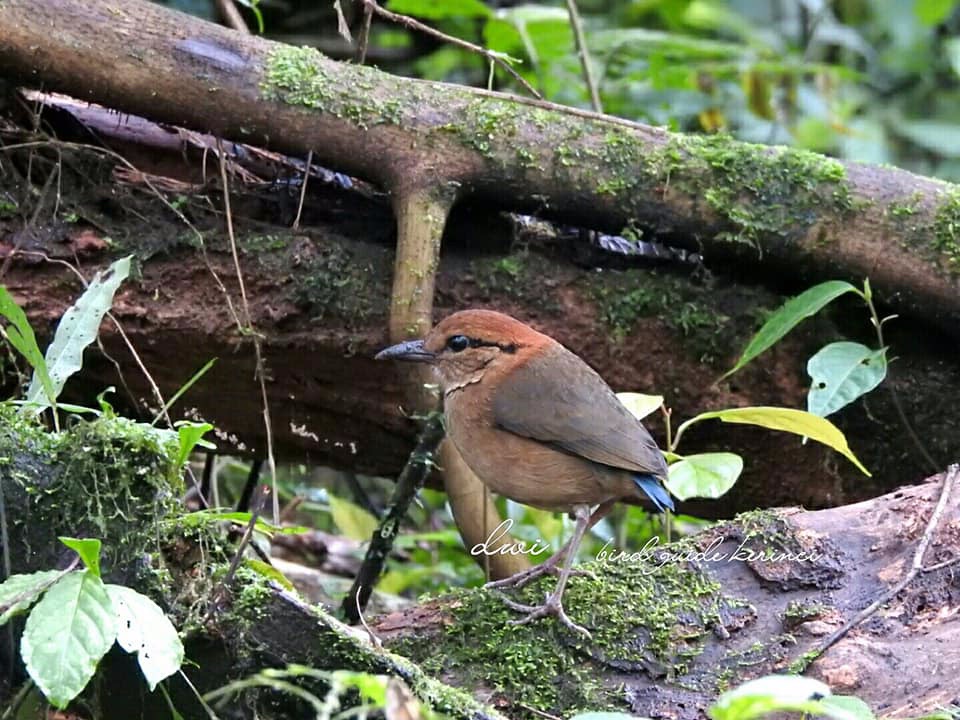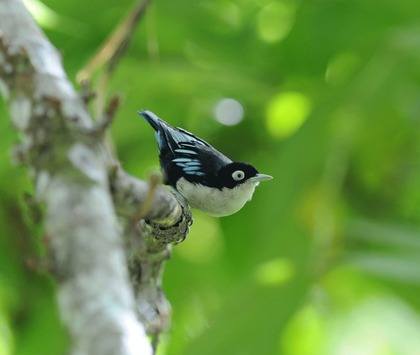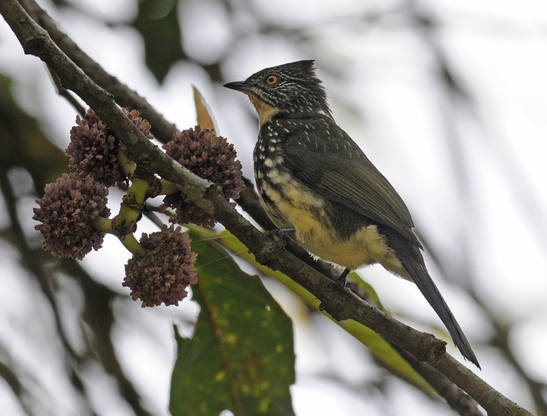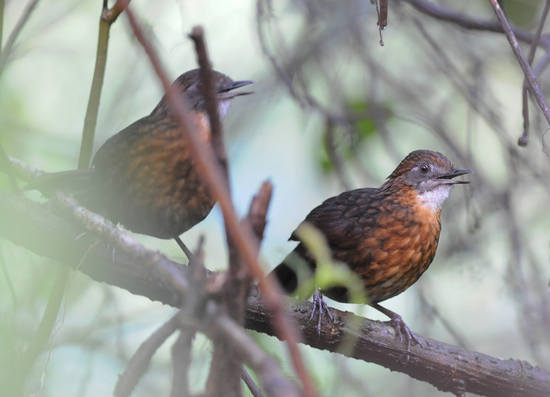Day 1 UK – Jakarta - 4th September
Upon arrival at Soekarno Hatta International Airport, Jakarta, Indonesia, we will transfer a very short distance to a comfortable airport hotel where we can have dinner together and get to know each other before getting a good night’s sleep. Night in Jakarta.
Days 2 - 5 Way Kambas, Sumatra
On our first morning we will take a very short flight to Bandar Lampung and then make the drive to Satwa camp where we will stay for three nights. Our time here will amount to three full days at the magnificent Way Kambas National Park in southern Sumatra which will give us a great chance to find many of the wonderful birds that occur here. Lowland tropical rainforest is one of the most endangered habitats in Southeast Asia and, indeed, there are only really fragments remaining across the continent, but Way Kambas is one of the biggest and best of those fragments playing host to a complete avifauna as well as mammals threatened with extinction which include Sumatran Tiger and Sumatran Rhino. If we were to see either of those it would be time to go out and buy a lottery ticket as it would require unbelievable luck, but they are there! The forest at Way Kambas is dense but contains plenty of huge strangler fig trees with massive canopies, often hosting large epiphytic plants. Forest here occupies a flat plain no more than a few metres above sea level and is intersected by narrow creeks and oxbow pools in which some really rare birds feed including Lesser Adjutant and Storm’s Stork, both of which have been seen on previous trips. However, top of the target list will be White-winged Duck which we hope to find on one of its regular spots which is only accessible by a short boat ride and a walk through the forest.
Way Kambas is also a great place to see many of the larger and more colourful species of the region including Crested Fireback, Red-naped Trogon, Rufous-collared Kingfisher, Scarlet-rumped Trogon, Diard’s Trogon, Banded Kingfisher, Red-bearded Bee-eater and a whole myriad of woodpeckers including Buff-necked, White-bellied, Banded, Orange-backed & Buff-rumped Woodpeckers to name a few. Of course, this is also an excellent place to see the spectacular Malayan Banded Pitta and we will put in the effort to ensure we all get a good view of this gem of the forest.
Night birding is one of the big highlights at Way Kambas and assisted by an excellent local guide we have a real chance of seeing all of the following: Oriental Bay Owl, Reddish Scops Owl, Brown Boobook, Malaysian Eared Nightjar, Bonaparte’s Nightjar, Blyth’s Frogmouth, Gould’s Frogmouth, Large-tailed Nightjar, Brown Wood Owl, Sunda Frogmouth and the superb Large Frogmouth. Of course it takes effort and patience to see these birds, species this mouth-watering don’t come easily but we have made sure that we have sufficient time to locate most, if not all, of them.
Green Broadbill is one of those iconic birds of the Southeast Asian rainforest and we should find this jewel here while Black-and-yellow, Banded and Dusky Broadbills are all likely too. It is not just colourful birds we are after though, Sumatran (Buetikoffer’s) Babbler is an endemic but rather dull babbler and there are plenty more from this family to find including Black-throated Babbler, Ferruginous Babbler and the rather strange Fluffy-backed Tit Babbler which can be a real highlight if seen doing their amazing display. Way Kambas is one of the best birding sites in Southeast Asia and a stay here is always one of the high points of the trip. Nights of days 4th, 5th& 6that Satwa Lodge, Way Kambas. Night of 7that Jakarta airport hotel.
Day 6 Jakarta to Kerinci
After breakfast we will catch our flight to Padang which will take around 1 hour 45 minutes. Our local guide will meet us at the airport and escort us, by bus, to Kerinci, a journey of about 7 hours so that after a few stops to take in the scenery and a few common birds, we will arrive around about time to have a beer or two before enjoying dinner together. Overnight at Subandi’s Homestay, Kerinci.
Days 7 - 9 Gunung Kerinci
The fact that Gunung Kerinci is a volcano will be very obvious when we view it from our accommodation in the early morning and see a plume of smoke/condensation rising from the top. We will not be heading to the summit but we will certainly be spending plenty of time on the summit trail where we hope to see many of Sumatra’s key species. Our accommodation is a homestay close to the forest from where we make daily excursions to various levels up the mountain walking through dense, moist forest. We use a narrow trail, walking slowly to look for many of Sumatra’s endemics with Rusty-bellied Wren Babbler in the undergrowth of the lower slopes and hopefully we can find a roosting Short-tailed (Sumatran) Frogmouth or even Rajah Scops Owl if we are lucky. Also in the undergrowth we can expect Pygmy Wren Babbler, the Sumatran race of White-browed Shortwing and the Sumatran race of Sunda Robin while we also expect to find both Shiny and Sumatran Whistlingthrushes along the way.
Of course we will be searching for some of the star attractions along the way including Schneider’s Pitta although we are hoping that they will make an appearance at a photography stakeout as they have been doing in recent years. Other species that have been attracted to stakeouts include Salvadori’s Pheasant and Bronze-tailed Peacock Pheasant; while these secretive birds cannot be guaranteed our local guide has a good record with these species and all have been seen on previous Zoothera trips to Sumatra so we have a good chance. Red-billed Partridge is a stunning bird when seen and completes the set of ground-dwelling endemics that we hope to see here.
Sumatran Wren Babbler is an incredible bird and one that will take some searching for but as we do so we should encounter flocks of smaller foraging birds that should include Sunda Warbler, Black-capped White-eye, Sunda Minivet, Indigo Flycatcher and the wonderful Blue Nuthatch. Rufous-vented (Sumatran) Niltava is a stunning bird when seen sitting in the mid-storey of the forest while we will need to hike a fair way up the mountain for a chance to find Sumatran Cochoa, a very scarce and elusive bird.
During our stay at Gunung Kerinci there will also be opportunities to search for some exciting night birds. At dusk Salvadori’s Nightjar can usually be seen as can Barred Eagle Owl but Rajah Scops Owl takes more work if we have not found it on a roost site. With a little luck though we can find the Sumatran form of Collared Scops Owl during the day as it calls from the canopy.
Three days are scheduled here so that we have time to look for all the main target species as patience and persistence is definitely required here and we will need to make multiple sorties up the hill, but always at a slow pace. One thing is for sure there are always plenty of good birds to look for here, particularly the stunning Sumatran Trogon which can be quite abundant at times but there are plenty of others including Mountain Leaf Warbler, Sunda Bush Warbler, Temminck’s Sunbird, Fire-tufted Barbet, Blyth’s Shrike Babbler and Long-tailed Sibia. Overnights at Subandi’s Homestay.
Day 10 Lempur Lake – Sungai Penuh
After an early breakfast we travel towards forest close to Lempur Lake on a quest for a potential show-stopper in Sumatran Ground Cuckoo. This site is a regular for this seldom-seen bird but it can be unpredictable with it being fairly tame on some occasions but totally absent on others so we will be hoping for some luck here. Along the way there is a good chance to pick up some of the birds we may not have seen well beforehand, perhaps Sumatran Trogon, Sunda (Sumatran) Bulbul, Red-bearded Bee-eater, Spot-necked Bulbul as well as a chance of Sumatran Treepie and Black-and-crimson Oriole. Open country in this area can sometimes turn up Javan Myna and Black-winged Kite.
In the late afternoon we will pay a visit to rice fields and wet areas around Kerinci Lake where species include the cute White-headed Munia, Baya Weaver, Purple Heron, Lesser Whistling Duck, Great Egret and Black-backed Swamphen before checking into our hotel in Sungai Penuh followed by a good dinner.Overnight in a comfortable hotel in Sungai Penuh.
Days 11-12 Tapan Road
From nearby Sungai Penuh we have two full days to enjoy the birding along the extensive Tapan road. This narrow road stretches for many kilometres through excellent forest giving us access to a variety of altitudes and the birdlife associated with them. One of the star attractions along here is the lovely, endemic Blue-masked Leafbird while other key species include Sumatran Treepie, Sumatran Drongo, Cream-striped Bulbul, Sumatran Leafbird, Sunda Cuckoo, Sunda Cuckooshrike along with more widespread but equally wonderful birds such as Long-tailed Broadbill, Black-and-crimson Oriole and Chestnut-capped Laughingthrush.
If we have not previously seen it there is a good chance to catch up with Sunda Forktail here and we are likely to get more sightings of the fantastic Sumatran Trogon while we will put a lot of effort into making sure everyone gets a good view of Graceful Pitta, one of the biggest prizes of the site. Another highly sought-after bird is Marbled Wren Babbler which inhabits some of the gulleys along the road and it is in these damp areas that might also find Fulvous-chested Jungle-flycatcher, rare White-tailed Flycatcher or Rufous-chested Flycatcher.
Birding along the road gives us good views across the forest which is ideal for spotting large birds in flight including exciting species such as Rhinoceros Hornbill, Rufous-bellied Eagle, Bushy-crested Hornbill, Black Eagle, Blyth’s Hawk Eagle and Wreathed Hornbill. Looking out across the forest will also allow us to spot birds perched out in the open in the early morning which will certainly include Little Cuckoo Dove and, if we are lucky, Sumatran Green Pigeon.
While searching for the specialities we are also certain to see a wide variety of commoner species that often travel in flocks such as Chestnut-crowned Warbler, Blyth’s Shrike Babbler, Mountain White-eye, Mountain Leaf Warbler, Golden Babbler, Temminck’s Sunbird and Sunda (Sumatran) Bulbul. The birding is usually good here with a decent abundance of birds allowing us to see many birds for a second time as well as the endemics that occur here. Overnights in a comfortable hotel in Sungai Penuh.
Day 13 Kerinci to Jakarta
Our stay in Sumatra draws to a close today as we travel back to Padang to catch our flight back to Jakarta. Overnight at Jakarta airport hotel.
Day 14 Maura Angke, Pulau Rambut to Cibodas
Today we start the second leg of our trip, Java, a new island and new set of species including a whole load more endemics to enjoy. After an early breakfast we make the short drive, through Jakarta’s suburbs to one of the few areas for birding within the city itself; Maura Angke Swamp. This area of mangroves, reedy pools, floating vegetation and surrounding scrub woodland is not going to win any prizes for the best scenery of the trip but despite its rather small size it will provide a good number of species quickly. Javan (Sunda) Coucal is our main target here, endemic to a narrow belt of land around Java, we should be here at first light for the best chance of this elusive bird. However, Sunda Pygmy Woodpecker, Small Blue Kingfisher, Small Minivet, Javan Munia, Bar-winged Prinia, Island Collared Dove, Linchi Swiftlet and Javan Pond Heron are all much easier to see here giving us a whole load of regional specialities. Depending on the state of the boardwalk we should be able to see waterbirds including Black-backed Swamphen and White-browed Crake while Purple Heron, Oriental Darter, Black-crowned Night Heron all fly overhead. We should also be able to locate Pied Triller and Australasian Reed Warbler with a little effort and we might get lucky with one or two Black-winged Starlings mixed up with the Javan Mynas, or perhaps Sunda Teal on the open water.
After Maura Angke we will drive west along the coast to the point where we begin a boat trip. The boat will take us out into Jakarta Bay where we should find good numbers of Frigatebirds resting on bamboo fish traps. This is one of the easiest places in the world to see Christmas Island Frigatebird and we will expect double figures of this critically endangered species alongside the more common Lesser Frigatebird. Other birds could include a few terns, such as Great Crested or White-naped and if our luck is in we may get sightings of flyover Milky Storks before getting back to shore where we can check out a site for Javan Plover. After this we will drive to our accommodation near Gunung Gede. Overnight in Puncak Inn, Cibodas.
Day 15 Cibodas Botanical Gardens & Golf Course
Visiting Cibodas Botanical Gardens, nearby, after a more leisurely breakfast. The pleasant open aspect of these gardens make birding rather a pleasant experience and they contain plenty of good birds, including many seen on the previous day so that we can enjoy more and, in some cases, better views of them. If we did not see them previously we will target Yellow-throated Hanging Parrot and the drab but wonderfully small Pygmy Tit as well as the magnificent Javan Hawk Eagle. The small streams here are a good place to see Sunda Forktail, although it is shy and we might need some patience and persistence for good views. This area will give us our first chance of Javan Kingfisher and we may spot some raptors overhead as things warm up, maybe Black Eagle, Spotted Kestrel and Javan Hawk Eagle. This area is also good for getting good views of Flame-fronted Barbet and Orange-spotted Bulbul .
We can have a lunch break back at our hotel and in the late afternoon we can visit a nearby golf course and track down Javan Kingfisher and a few other species such as Cinereous Tit, Spotted Kestrel and Olive-backed Tailorbird. This will be a good opportunity for us to do some night birding too with Salvadori’s Nightjar and Sunda Scops Owl present in the botanical gardens. Overnight in Puncak Inn, Cibodas.
Day 16 - 17 Gunung Gede National Park
Today we will spend all day on the trail up Gunung Gede, following it up a fairly steep and rocky trail through fantastic forest which is often full of roving flocks of exciting birds. Starting before dawn we hope to be able to find Javan Frogmouth and possibly Sunda Scops Owl early on before the sun rises to reveal the forest. Species such as Crescent-chested Babbler, Rufous-tailed Fantail, Pygmy Wren Babbler, Pied Shrike-babbler, Eye-browed Wren Babbler, White-chested Babbler, Orange-spotted Bulbul, White-flanked Sunbird, Blood-breasted Flowerpecker, Blue Nuthatch and Trilling Shrike-babbler are all species we will hope to see as bird activity reaches its peak in the morning. If we are very lucky Sunda Thrush could be on the trail in the early morning, we will know we are in for a good day if we do see it.
As we continue up the trail we should be able to find Indigo Flycatcher in the mid-storey which is also where the amazing but much rarer Javan Trogon resides as well as wonderful Flame-fronted Barbet and Brown-throated Barbets in the canopy. Javan Whistlingthrush is another endemic species that we expect to see as well as the tiny Javan Tesia in the undergrowth. As we encounter more flocks we should add Javan Fulvetta, Sunda (Javan) Blue Robin, Javan Grey-throated White-eye (Javan Dark-eye) and the lovely Sunda Warbler while (Javan) Chestnut-backed Scimitar Babbler is a bit more scarce.
However, we will have to expend more effort and go higher up the mountain to find some more of the birds we are after here such as Sunda (Javan) Bulbul, Sunda Minivet, Mountain Leaf Warbler, the increasingly rare Rufous-fronted Laughingthrush and raucous Spotted Crocias in the canopy. This is also where we have the best chance of finding Javan Trogon and of calling in a Javan Cochoa; we have a good chance of both species if we put in the effort but neither is easy. There are plenty of more widespread species to be enjoyed between the regional specialities too, including White-browed Shortwing, Snowy-browed Flycatcher, Checker-throated Woodpecker, incredible Fire-tufted Barbets and Lesser Racket-tailed Drongo to mention a few.
Eventually we will reach our campsite, at the end of a long day, for the night where out porters will cook dinner for us and we may have a chance to find Javan Scops Owl.
Our second day on the mountain will see us retracing our steps, slowly walking back down the mountain, spending the productive morning session at high altitude to look for those species that eluded us on the previous day, Javan Cochoa usually takes some searching for. Our slow descent will allow us to have the best chance of finding our targets as well as being able to appreciate again many of the commoner species and perhaps allow us to find scarcer birds such as Horsfield’s Thrush, Pink-headed Fruit Dove, Chestnut-bellied Partridge or even Javan Woodcock if our luck is really in. Other scarce birds that we have a chance of finding include Sunda Cuckoo, Sunda Bush Warbler, Tawny-breasted Parrotfinch and Mountain (Indonesian) Serin. Overnight on 18thcamping. Overnight 19th at Puncak Inn, Cibodas.
Day 18 Botanic Gardens – Halimun-Salak National Park
After two days on the mountain we can take the morning a little easier, using some time to look for species in the lower areas that we perhaps had missed out on previously. Maybe we need to look again for Sunda Thrush, Sunda Forktail or Yellow-throated Hanging Parrot but maybe just another view of a great bird like Javan Kingfisher or a chance to find the distinctive Javan form of Coppersmith Barbet. We will then travel to Gungung Halimun National Park, one of the largest tracts of forest remaining in Java and the home to many scarce species. It is a fairly slow journey but we plan to be there in time for some late afternoon birding and perhaps a little owling. Overnight at Cikiniki Research Station.
Day 19 Halimun-Salak National Park
We have all day to explore the trails through the high quality forest here with lots of potential species awaiting us. White-bellied Fantail and Streaky-breasted Spiderhunter should be found here in the mid storey while there are more chances to see White-bibbed Babbler, Javan Trogon, Spotted Crocias, Flame-fronted Barbet, Javan Hawk Eagle Sunda (Javan) Bulbul and many others.
A number of scarce species are found here so that persistence in the forest will give us our first chances of seeing the colourful Javan Sunbird, Dark-backed Imperial Pigeon or perhaps Sumatran Green Pigeon. More widespread birds are well-represented at this site too with some very colourful species to look for that include Orang-breasted Trogon, Banded Kingfisher, Pale-blue Flycatcher and Banded Broadbill. Overnight at Cikiniki Research Station.
Day 20 Halimun-Salak National Park – Carita Forest
We have a little time in the morning to look for any key species that we are missing but early on we will start what can be a slow journey towards Carita. In tea plantations at Halimun we have time to stop and look for (Javan) Brown Prinia and maybe Javan Kingfisher if we still need it. We should get to Carita in time for some late afternoon birding when we can hopefully get ourselves good views of a wonderful Javan Banded Pitta and perhaps Grey-cheeked Tit Babbler. As it becomes dark this could also be a good opportunity for us to find Javan Owlet and Javan Frogmouth. Overnight in a comfortable hotel at Carita Beach.
Day 21 Carita Forest
We have all day to spend birding the forest tract at Carita in order to ensure we all get the views of Javan Banded Pitta that we want. The forest is not far away from our accommodation so we are able to get on site very early. Early morning birding can be productive and a couple of the most attractive birds of the tour can be found here in the form of Black-banded Barbet and Black-naped Fruit Dove while other possibilities include Fulvous-chested Jungle-flycatcher, Yellow-eared (Little) Barbet, Changeable Hawk Eagle, White-breasted Babbler and Grey-cheeked Green Pigeon.
There will be time for an afternoon break in the heat of the day before spending the late afternoon looking for any key species still eluding us as well as a last attempt at night birding if we still need Javan Owlet, Javan Frogmouth or perhaps Salvadori’s Nightjar. Overnight in a comfortable hotel at Carita Beach.
Day 22 Carita Forest – Palau Dua - Jakarta - 25th Sept
Depending on how successful we have been we can either revisit the forest or head straight to Palau Dua, an open country area, where there will be a good variety of species to finish the trip with including Javan Plover, Blue-tailed Bee-eater, Small Blue Kingfisher, Sacred Kingfisher, Javan Munia, White-headed Munia, Freckle-breasted Woodpecker, Savanna Nightjar, Javan Pond Heron and perhaps, if lucky, Javan White-eye. This will be a nice way to end our time in Indonesia with a whole load of birds including the attractive Scarlet-headed Flowerpecker which we may not have seen previously.
The journey back to Jakarta will take around 2 hours so that we will be there in time to take late afternoon/evening flights back home.

